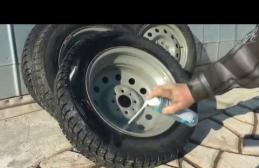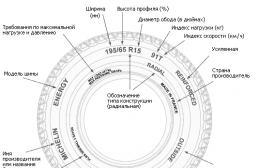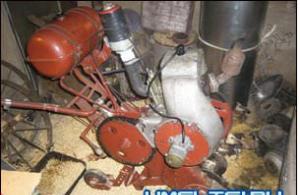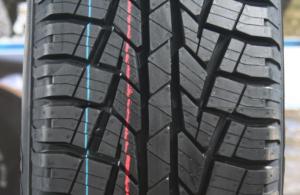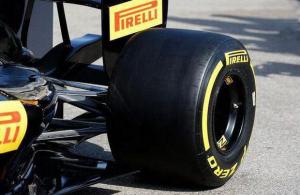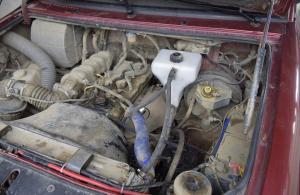What methods are used by auto manufacturers in order to attract the attention of consumers. The buyer is bewitched with fashionable futuristic design, unprecedented safety measures, the use of more environmentally friendly engines, etc.
Personally, I am not very moved by the latest delights of various design studios - even more so: for me, the car was and will remain an inanimate piece of metal and plastic and all the attempts of marketers to tell me how high my self-esteem should go to the sky after buying newest model»Is nothing but a shaking of the air. Well, at least for me personally.
More exciting for me, as a car owner, is the issue of economy and survivability. Fuel costs far from three kopecks, besides, there are too many followers of Vasily Alibabaevich from “Gentlemen of Fortune” in the vastness of the “great and mighty”. Auto manufacturers have been trying to switch to the use of alternative fuels for a long time. In the USA, electric cars have taken a fairly strong position, but not everyone can afford to buy such a machine - it is very expensive. Now, if only budget-class cars were made electric ...
An interesting goal was set by the French manufacturers PSA Peugeot Citroen. interesting program to reduce fuel consumption. This group of auto manufacturers is developing a hybrid power plant which would be able to spend only two liters of fuel per hundred kilometers. The engineers of the company already have something to show - today's developments allow saving up to 45% of fuel in comparison with an ordinary internal combustion engine: even with such indicators of two liters per hundred it is not yet possible to fit, but by 2020 they promise to conquer this milestone.

The statements are quite bold and interesting, but it would be more interesting to take a closer look at this hybrid and no less economical setup. The system is called Hybrid air and as it becomes clear from its name, in addition to traditional fuel, it uses the energy of air, compressed air.

The Hybrid Air concept is not so complex and is a hybrid of three cylinder engine internal combustion and a hydraulic motor - pump. As tanks for alternative fuel in the central part of the car and under the trunk space, two cylinders are installed: which is larger - for low pressure; and the one that is smaller, respectively, for the high. The car will be accelerated on the internal combustion engine; after reaching the speed of 70 km / h, the hydraulic motor is switched on. Through this very hydraulic motor and an ingenious planetary transmission, the compressed air energy will be converted into rotary motion wheels. In addition, an energy recovery system is provided on such a car - during braking, the hydraulic motor acts as a pump and pumps air into a low-pressure cylinder - that is, the much-desired energy will not be wasted.
According to the company's engineers, a car with hybrid installation The Hybrid Air, even though the mass is 100 kg higher than a traditional engine, will have fuel savings of at least 45%, and this despite the fact that the sophistication in this field of motor construction is far from complete.
Expected that hybrid systems the first to be applied on hatchbacks Citroen C3 and Peugeot 208, and it will be possible to ride "air" in 2016, and as the main markets for cars with Hybrid Hybrid Air French managers see Russia and China.
The world's first production vehicle with an engine powered by compressed air released by Indian Tata company, known all over the world for the production of cheap Vehicle for poor people.
Automobile Tata onecat weighs 350 kg and can travel 130 km on one supply of compressed air to a pressure of 300 atmospheres, while accelerating to 100 kilometers per hour. But such indicators are possible only with the maximum filled tanks. The lower the air density in them, the lower the maximum speed indicator becomes.
4 cylinders made of carbon fiber with a kevlar shell, 2 in length and a quarter of a meter in diameter each, located under the bottom, hold 400 liters of compressed air under a pressure of 300 bar.
Everything inside is very simple:
But this is understandable, since the car is positioned mainly for use in taxis. By the way, the idea is not uninteresting - unlike electric vehicles with their problematic recyclable batteries and low efficiency of the charge-discharge cycle (from 50% to 70% depending on the level of charge and discharge currents), air compression, storage in a cylinder and subsequent use is quite economical and environmentally friendly.
If you refuel your Tata car OneCAT by air at the compressor station, it will take three to four minutes. "Pumping up" with the help of a mini-compressor built into the machine, working from an outlet, lasts three to four hours. " Air fuel"Is relatively cheap: if we convert it to the gasoline equivalent, it turns out that the car consumes about a liter per 100 km.
In a pneumatic car, there is usually no transmission - after all, the air motor delivers maximum torque immediately - even in stationary. Air engine also practically does not require prophylaxis, the standard mileage between two technical inspections is no less than 100 thousand kilometers. And he practically does not need oil - a liter of "lubricant" is enough for the motor for 50 thousand kilometers (for ordinary car it will take about 30 liters of oil).
The secret of a new car is that it four-cylinder engine with a volume of 700 cubes and a weight of only 35 kilograms, it works on the principle of mixing compressed air with external, atmospheric air. This power unit reminds conventional engine internal combustion, but its cylinders different diameters- two small, driving, and two large, workers. When the engine is running, outside air is sucked into the small cylinders, compressed by pistons and heated there. It is then pushed into two working cylinders and mixed there with cold compressed air coming from the tank. As a result air mixture expands and sets in motion the working pistons, and they - crankshaft engine.
Since no combustion occurs in the engine, only clean, exhaust air will be its "exhaust gases".
Air engine designers at MDI have calculated the total energy efficiency in the refinery-vehicle chain for three types drive - gasoline, electric and air. And it turned out that the efficiency of the air drive is 20 percent, which is more than twice the efficiency of the standard gasoline engine and one and a half times - the efficiency of the electric drive. In addition, compressed air can be directly stored for future use using unstable renewable energy sources such as wind turbines - then the efficiency is even higher.
When the temperature drops to -20C, the energy reserve of the pneumatic drive is reduced by 10% without any other harmful effects for its operation, while the energy reserve of electric batteries will be reduced by about 2 times.
By the way, the air exhausted in the pneumatic engine has a low temperature and can be used to cool the car interior in the hot season, that is, you get the air conditioner practically for free, without unnecessary energy consumption. But, alas, the heater will have to be made autonomous. But this is much better than an electric car - which has to spend energy on both heating and cooling.
By the way, glass-carbon fiber cylinders are quite safe - if damaged, they do not explode, only cracks appear in them, through which air escapes.
Designed by French by Motor Development International (MDI) AIRPod is powered by compressed air. Although it has been produced since 2009, for a long time it caused only a condescending smile from everyone (with the exception of environmental fans). Indeed, initially it could only be operated in warm climates: the air-propeller engine developed in the early 1990s did not start when low temperatures... And although today a compressed air heating system has already been developed, expanding the geography of AIRPod application, it can be purchased only in Hawaii (USA).
Road show
In the spring of 2015, the independent company ZPM (Zero Pollution Motor - "Zero Pollution Motor") held a public road-show during the prime time of the American TV channel ABC - a presentation aimed at attracting investors (literally translated into Russian as "road show"). ZPM bought from the French the right to manufacture and sell the new model AIRPod - so far only in Hawaii, selected as the "launch market".
Presented a project of a plant for the production of environmentally clean cars two shareholders of ZPM - famous American singer Pat Boone (the peak of his career was in the 1950s) and film producer Eitan Tucker ("Shrek", "Seven Years in Tibet", etc.). They offered potential investors (so-called "business angels") 50% of ZPM shares for $ 5 million.
Investors were in no hurry to fork out. At the same time, Robert Herjavets, who was considered the most promising of them, the owner and founder of the Canadian IT company Herjavec Group, said that he was interested in AIRPod sales not in one particular state, but in the entire United States. So, at present, the ZPM management is negotiating with the French to expand the sales territory.
Sometimes you need to have on hand low power engine, which converts the energy of combustion of fuel into mechanical energy. As a matter of fact, such engines have a very difficult assembly, and if you buy a ready-made one, then you need to say goodbye to a tidy sum from your wallet. Today we will consider in detail the design and self-assembly one of these engines. But our engine will work a little differently, on compressed air. Its area of application is very large (models of ships, cars, if you add a current generator, you can assemble a small power plant, and the like).Let's start to consider each part of such an air engine separately. This engine is able to give from 500 to 1000 rpm and thanks to the use of a flywheel it has decent power. The supply of compressed air in the resonator is enough for 20 minutes of continuous engine operation, but you can also increase the operating time if you use car wheel... This engine can also be operated with steam. The principle of operation is as follows - a cylinder with a prism soldered to one of its sides has a hole in its upper part, which passes and swings through the prism together with the axle fixed in it in the bearing of the rack.

To the right and left of the bearing, two holes are made, one for inlet air from the reservoir into the cylinder, the second for exhaust air outlet. The first position of the engine operation indicates the moment of air intake (the hole in the cylinder coincides with the right hole in the strut). The air from the reservoir, having entered the cylinder cavity, presses on the piston and pushes it down. The movement of the piston is transmitted through the connecting rod to the flywheel, which, turning, takes the cylinder out of the extreme right position and continues to rotate. The cylinder assumes a vertical position and at this moment the air intake stops, since the holes of the cylinder and the rack do not match.

Due to the inertia of the flywheel, the movement continues and the cylinder is already moved to the extreme left position. The cylinder bore aligns with the left hole in the rack and through this hole the exhaust air is pushed out. And the cycle repeats over and over.

Air engine parts
CYLINDER - made of brass, copper or steel tube with a diameter of 10 - 12 mm ,. The cylinder can be a brass rifle cartridge case of the appropriate caliber. The tube should have smooth inner walls. A prism cut from a piece of iron must be soldered onto the cylinder, in which a screw with a nut (swing axis) is tightly fixed, above the screw, at a distance of 10 mm from its axis, a hole with a diameter of 2 mm is drilled through the prism into the cylinder for air inlet and outlet.

CONNECTING ROD - cut from a brass plate 2 mm thick. one end of the connecting rod is an extension in which a hole with a diameter of 3 mm is drilled for the crank pin. The other end of the connecting rod is designed to be soldered into the piston. The length of the connecting rod is 30 mm.

PISTON - cast from lead directly in the cylinder. To do this, dry river sand is poured into a tin can. Then we insert the tube prepared for the cylinder into the sand, leaving a protrusion of 12 mm outside. To destroy moisture, a jar of sand and a cylinder must be warmed up in an oven or on a gas stove. Now you need to melt the lead into the cylinder and immediately immerse the connecting rod there. The connecting rod must be installed exactly in the center of the piston. When the casting has cooled, the cylinder is removed from the can of sand and the finished piston is pushed out of it. We smooth out all irregularities with a small file.

ENGINE STRUCTURES - must be made according to the dimensions shown in the photo. It is made from 3 mm iron or brass. The height of the main drain is 100 mm. In the upper part of the main strut, a hole with a diameter of 3 mm is drilled along the central axial line, which serves as a bearing for the swing axis of the cylinder. The two top holes with a diameter of 2 mm are drilled along a circle with a radius of 10 mm, drawn from the center of the swing axis bearing. These holes are located on either side of the centerline of the rack, 5 mm away from it. Through one of these holes, air enters the cylinder, through the other it is pushed out of the cylinder. The entire structure of the air engine is assembled on the main strut, which is made of wood with a thickness of approximately 5 cm.

MACHINE - you can pick up a ready-made one or cast from lead (cars with an inertial engine were previously produced, there is the flywheel we need). If you nevertheless decide to cast it from lead, then do not forget to install a shaft (axis) with a diameter of 5mm in the center of the mold. The dimensions of the handwheel are also shown in the figure. There is a thread on one end of the shaft for attaching the crank.
KRIVOSHIP - we cut out of iron or brass with a thickness of 3 mm according to the picture. The crank pin can be made from steel wire with a diameter of 3 mm and is soldered into the crank hole.
CYLINDER COVER - we also manufacture 2 mm brass and, after casting the piston, are soldered to the top of the cylinder. After assembling all parts of the engine, we assemble it. In brass and steel brazing, a powerful Soviet soldering iron and salt acid should be used for strong soldering. The reservoir in my design is applied from paint, rubber tubes. My engine is assembled a little differently, I changed the dimensions, but the principle of operation is the same. The engine used to work for me for hours, a homemade generator was connected to it alternating current... Such an engine may be of particular interest to modelers. Use the engine wherever you see fit and that's it for today. Good luck with the assembly - AKA
Discuss the article AIR ENGINE
Major areas of engineering research include electric vehicles, hybrid vehicles, and hydrogen-fueled vehicles. Hydrogen fuel and other, generally available technologies for obtaining cheap energy, are strictly prohibited by the world oil and industrial monopolies. However, progress cannot be stopped, and therefore, some enterprises and individual enthusiasts continue to create unique vehicles.

Today's topic of conversation concerns precisely pneumatic vehicles. The pneumocar is, as it were, a continuation of the theme of the steam car, one of the many branches of the use of engines operating due to the pressure difference of gases. By the way, the steam engine was invented long before the first steam engine James Watt, more than 2 thousand years ago, Hero of Alexandria. The idea of Heron was developed and embodied in a small cart by the Belgian Ferdinand Verbist, in 1668
 The history of the creation of the car brings to us not much information about successful and unsuccessful attempts inventors use a simple and cheap mechanism as an engine. In the beginning, there were attempts to use the force of the large spring and the force of the flywheel. These mechanisms have firmly established their position in children's toys. But using them as an engine of a full-size car seems frivolous. Nevertheless, such attempts continue and it seems that in the near future, unusual cars will be able to confidently compete with cars equipped with internal combustion engines.
The history of the creation of the car brings to us not much information about successful and unsuccessful attempts inventors use a simple and cheap mechanism as an engine. In the beginning, there were attempts to use the force of the large spring and the force of the flywheel. These mechanisms have firmly established their position in children's toys. But using them as an engine of a full-size car seems frivolous. Nevertheless, such attempts continue and it seems that in the near future, unusual cars will be able to confidently compete with cars equipped with internal combustion engines. 
Despite the seeming futility of this area of work in the field of road transport, the pneumatic car has a lot of advantages. This is the extreme simplicity and reliability of the design, its durability and low cost. This engine is quiet and does not pollute the air. Apparently all this attracts numerous supporters of this type of transport.
The idea of using compressed air to drive mechanisms and transport originated a long time ago and was patented in Great Britain, back in 1799. Apparently it arose from a desire to simplify the steam engine as much as possible and make it extremely compact for use on a car. Practical use  The air motor was introduced in America in 1875. They built mine locomotives that ran on compressed air. First a car with an air motor, was first demonstrated in 1932, in Los Angeles.
The air motor was introduced in America in 1875. They built mine locomotives that ran on compressed air. First a car with an air motor, was first demonstrated in 1932, in Los Angeles.
With the advent of the steam engine, the inventors tried to install it on the "Self-running carriages", but the bulky and heavy steam boiler turned out to be unsuitable for this type of transport.
Attempts have been made to use an electric motor and rechargeable batteries for self-propelled vehicles, and certain successes were achieved, but the internal combustion engine was out of competition at that time. As a result of fierce competition between it and the steam engine, the internal combustion engine won out. 
Despite many shortcomings, this engine still dominates in many spheres of human life, including all types of transport. The shortcomings of the internal combustion engine and the need to find a worthy replacement for it are increasingly being discussed in scientific circles and written in various popular publications, but all attempts to launch new technologies into mass production are blocked.
Engineers and inventors create the most interesting and promising engines that can completely replace the internal combustion engine, but the world oil and industrial monopolists use their levers of pressure in order to prevent the abandonment of the internal combustion engine and the use of new, alternative energy sources. 
And yet, attempts to create production car without an internal combustion engine, or with its partial, secondary use - continue.
Indian firm Tata Motors is preparing to launch mass production of the small city car Tata AIRPOD, which runs on compressed air.
Americans are also preparing for mass production six-seater CityCAT car,  compressed air. With a length of 4.1m. and a width of 1.82 m., the car weighs 850 kilograms. It can reach speeds of up to 56 km / h and cover a distance of up to 60 kilometers. The indicators are very modest, but quite bearable for the city, given the many advantages of the car and its very low cost. What are these advantages?
compressed air. With a length of 4.1m. and a width of 1.82 m., the car weighs 850 kilograms. It can reach speeds of up to 56 km / h and cover a distance of up to 60 kilometers. The indicators are very modest, but quite bearable for the city, given the many advantages of the car and its very low cost. What are these advantages?
Anyone who has a car or is related to road transport, they know perfectly well how complex the constructively modern car engine internal combustion. In addition to the fact that the engine itself is structurally quite complex, it requires a fuel metering and injection system, an ignition system, a starter, a cooling system, a muffler, a clutch mechanism, a gearbox and a complex transmission.
All this makes the engine expensive, unreliable, short-lived and impractical. Not to mention the fact that exhaust gases poison the air and the environment. 
An air motor is the exact opposite of an internal combustion engine. It is extremely simple, compact, quiet, reliable and durable. If necessary, it can even be placed in the wheels of the car. A significant disadvantage of this engine, which does not allow it to be freely used in vehicles, limited mileage from one refueling.
To increase the range of a pneumatic vehicle, it is necessary to increase the volume of the air cylinders and increase the air pressure in the cylinders. Both have strict limitations in terms of dimensions, weight and strength of cylinders. Maybe someday these problems will be solved, but for now so-called hybrid propulsion systems are being used.
In particular, for a pneumatic car, it is proposed to use a low-power internal combustion engine, which constantly pumps air into the working cylinders. The engine runs constantly, pumping air into the cylinders, and turns off only when the pressure in the cylinders reaches the maximum value. This solution allows you to significantly reduce gasoline consumption, carbon monoxide emissions and increase the range of the pneumatic car. 
Such a hybrid scheme is versatile and has been successfully used, including on electric vehicles. The only difference is that instead of a compressed air cylinder, electric battery, and instead of a pneumatic motor - an electric motor. Low-power internal combustion engine rotates electric generator, which recharges the batteries, which, in turn, power the electric motors.
The essence of any hybrid circuit is to replenish the consumed energy using an internal combustion engine. This allows a lower motor power to be used. It works in the most advantageous mode and consumes less fuel, which means it emits less toxic substances. An air car, or an electric car, gets the opportunity to increase the mileage, because the expended energy is partially replenished directly while driving. 
During frequent stops at traffic lights, when coasting and descending slopes, the traction motor does not consume energy and the cylinders or batteries are cleanly recharged. During long stops, it is better to replenish energy reserves from a standard filling station.
Imagine that you have arrived at work, the car is parked, and the engine continues to run, replenishing the energy reserves in the cylinders. Wouldn't that be overwhelming the benefits of a hybrid car? Will it turn out that the savings in gasoline will not be as significant as we would like?

In the days of my distant youth, I also thought about an air motor for a homemade car. Only the direction of my search was of a chemical nature. I wanted to find a substance that would enter into a violent reaction with water, or another substance, while emitting gases. Then I could not find anything suitable and the idea was abandoned forever.
But another idea came up - why not use vacuum instead of high air pressure? If the compressed air cylinder undergoes any damage, or the air pressure exceeds the allowable value, then this is fraught with its instant destruction, like an explosion. This does not threaten a vacuum cylinder; it can simply be flattened by atmospheric pressure.
To obtain high pressure in a cylinder, about 300 bar, a special compressor is needed. To obtain a vacuum in the cylinder, it is enough to admit a portion of ordinary water vapor inside. The cooled down steam will turn into water, having decreased in volume by 1600 times and ... the goal is achieved, a partial vacuum is obtained. Why partial? Because not every cylinder can withstand a deep vacuum. 
Then everything is simple. In order for the car to travel as far as possible on one cylinder, it is necessary to supply not air, but steam to the pneumatic motor. After completing the work, the steam passes through the cooling system, where it cools down and turns into water, enters the vacuum cylinder. That is, if steam is passed through the engine, say, 1600 cm3, then only 1 cm3 of water will enter the cylinder. Thus, only a small amount of water enters the vacuum cylinder and the duration of its operation increases many times.
Let's return, however, to our pneumatic vehicles. The Indian company Tata Motors is going to mass-produce a compact city car running on compressed air. The company claims that their air car is capable of accelerating to 70 km / h and covering up to 200 kilometers from a single refueling.

In turn, the Americans are also preparing the six-seater CityCAT pneumatic car for serial production. The declared characteristics mean that the car will be able to accelerate to 80 km / h and the range will be 130 km. Another pneumatic car of the American company MDI, a small three-seater MiniCAT, is also planned to be launched into series.
Many firms are interested in pneumo-cars. Australia, France, Mexico and a number of other countries are also ready to start producing this unusual yet promising mode of transport. The internal combustion engine will still have to leave the arena and give way to another engine, simpler and more reliable. It is difficult to say when this will happen, but it will certainly happen. Progress cannot stand still.


